You can contact LEARNZ, part of CORE Education, at:
Postal Address:
PO Box 13 678,
Christchurch 8141,
New Zealand
The ambassadors and I headed to Kerikeri airport this morning for a 9:45am departure to Auckland. A second flight would take us to Wellington. Thankfully it was settled weather to help make our time in the air smooth.
Kerikeri to Auckland
The flight from Kerikeri to Auckland is not a long one. We were only in the air for about 40 minutes. As we flew down the coast I couldn’t help but think of tsunami. Most of New Zealand’s coastline is exposed to tsunami hazard. Some more than others, especially in terms of travel time ie the time it would take for a tsunami to arrive.
From my research into this topic, I found out that New Zealand has experienced about 10 tsunamis of 5 metres or more since 1840. Historical records suggest that nearby events may happen in New Zealand about every 40 to 50 years on average. So, it is likely that at least one will occur in the lifetime of most New Zealanders. Evidence like this helps me realise the importance of events like the ShakeOut tsunami hīkoi, so you know what to do and where to go if a tsunami emergency ever happens where you are.
Auckland to Wellington
We had about an hour to wait at Auckland airport before the next flight. Enough time to relax with a cup of coffee before going through security for the next departure.
I enjoyed take-off, where I had a brief view over the Manukau Harbour before we turned south for the rest of the journey. I grew up on the shores of the Manukau Harbour and recall many fun fishing trips with my dad here.
We soon reached cruising altitude and settled back for the hour or so flight ahead.
As I looked out the window during the journey, I thought of how natural hazards are so much part of life in New Zealand. They have shaped the country’s beautiful landscape, but also caused devastation and loss of life. Many hazards can be linked to New Zealand’s location. It lies across two moving sections of the earth’s crust, which are pushing against each other. We are also threatened with tsunamis, floods, snows, landslides, storm surges and coastal erosion. These all have the potential to impact on human life, property or both.
Being prepared to deal with these dangers and constructing our built environment to minimise their effects is the price of living in a dynamic landscape. It is also a good reason to be taking part in this field trip!
Wellington arrival
We touched down in Wellington just after 1:00pm. Just in time for lunch! That’s one of the great things about Wellington, there is no shortage of excellent places to get good food. There is also no shortage of earthquake risk in the capital either.
The city lies on an active geological fault, called the Wellington fault. Read more about Wellington’s shaky foundations.
New Zealand’s biggest earthquake in recorded history happened here in 1855. It measured 8.2 on the Richter scale. I try not to think too much about this when I am in Wellington! Then again, it is important to be aware of these things so that you plan and prepare for the possibility of not just an earthquake, but any other natural hazard. I’m sure that by the end of the field trip we will all be a little wiser on that front!
Talk tomorrow,
Andrew
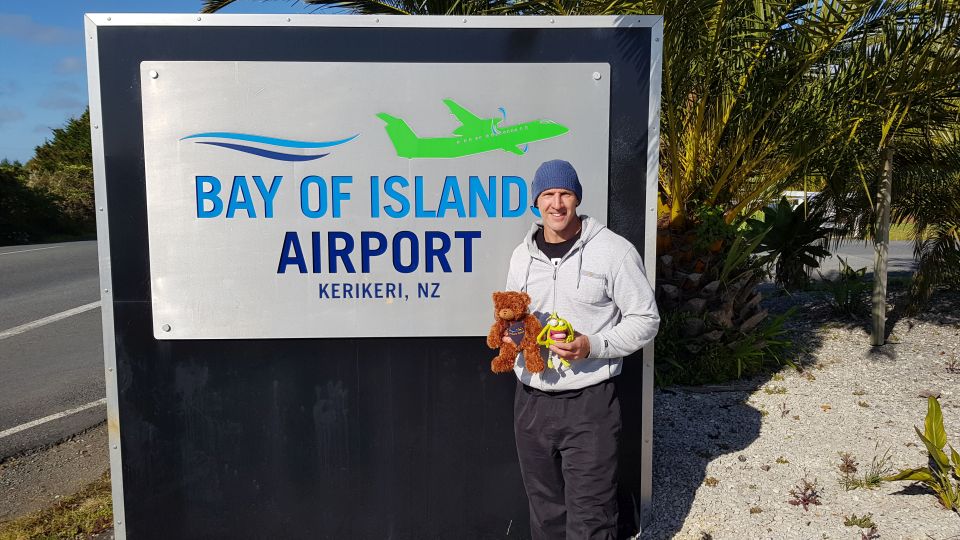
Andrew and the ambassadors arrive at Kerikeri Airport. Image: LEARNZ.
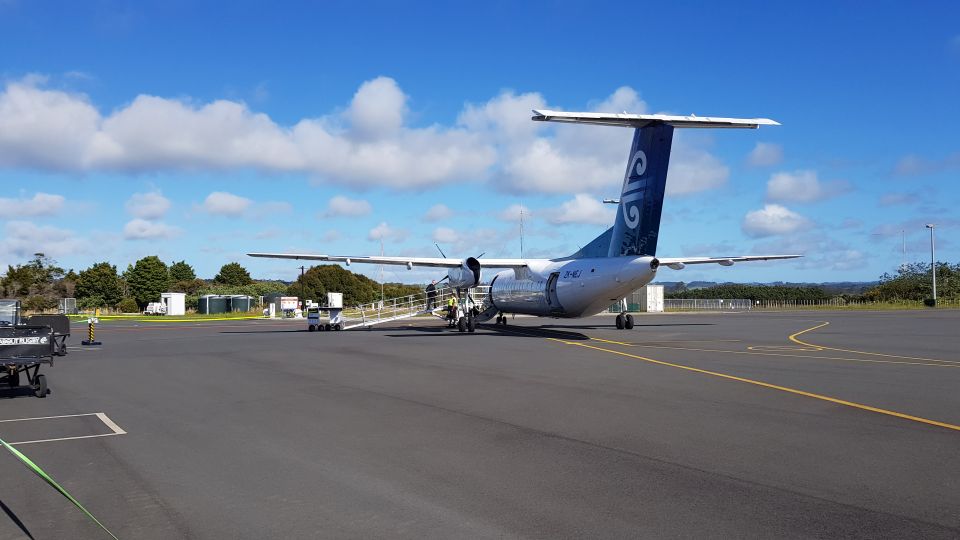
Heading to the Bombardier Q300 that took us from Kerikeri to Auckland. Image: LEARNZ.
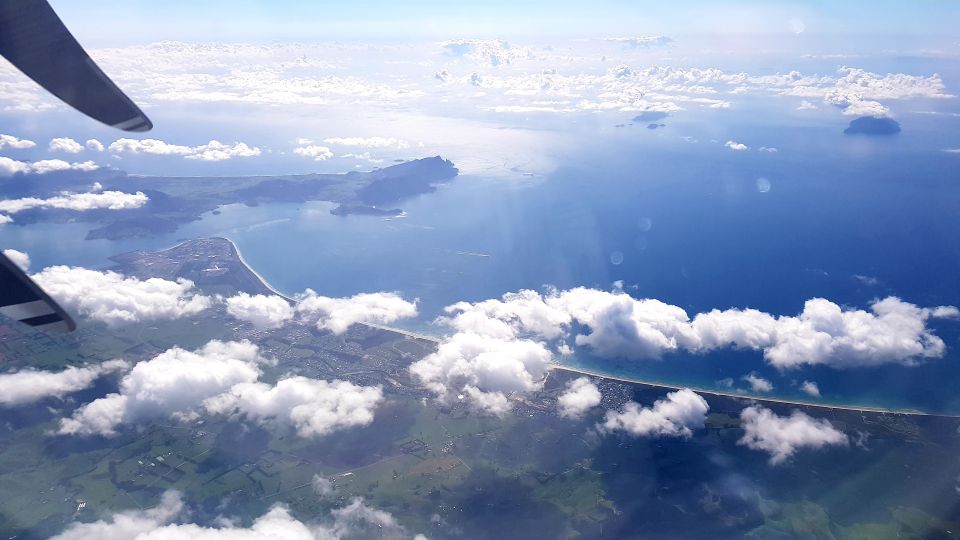
Looking out over Whangārei Heads on the way to Auckland. Image: LEARNZ.
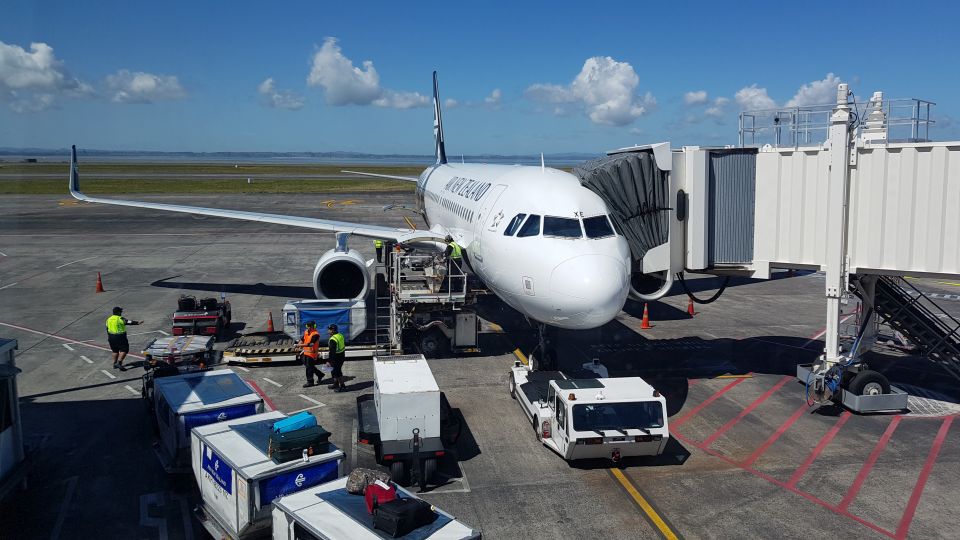
We flew to Wellington in an Airbus A320. Image: LEARNZ.
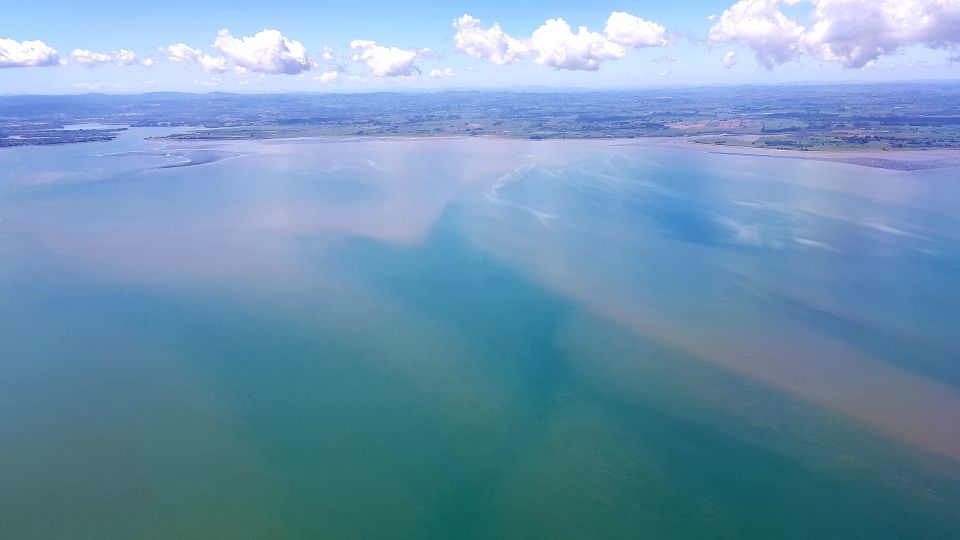
The Manukau Harbour was like a mirror as we took off from Auckland airport. Image: LEARNZ.
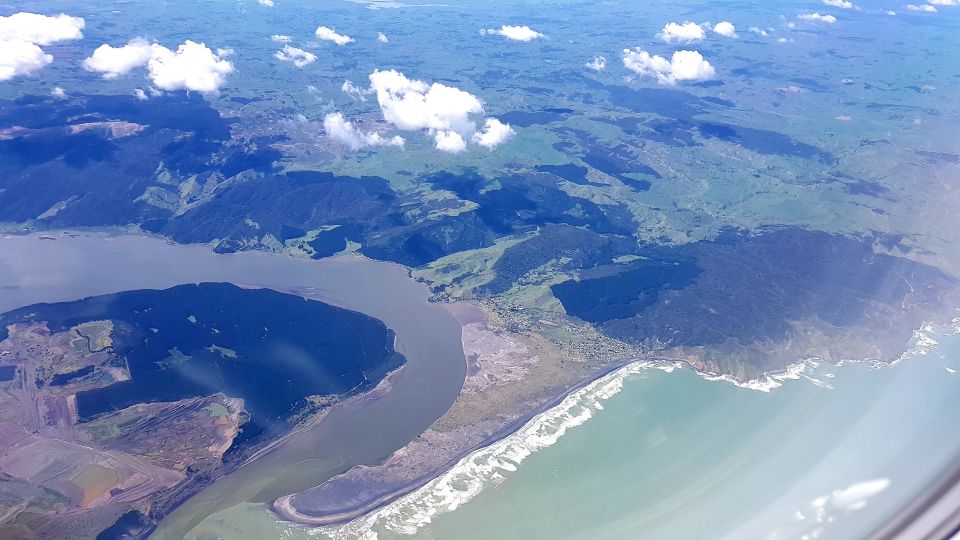
Looking down over Port Waikato just south of Auckland. Image: LEARNZ.
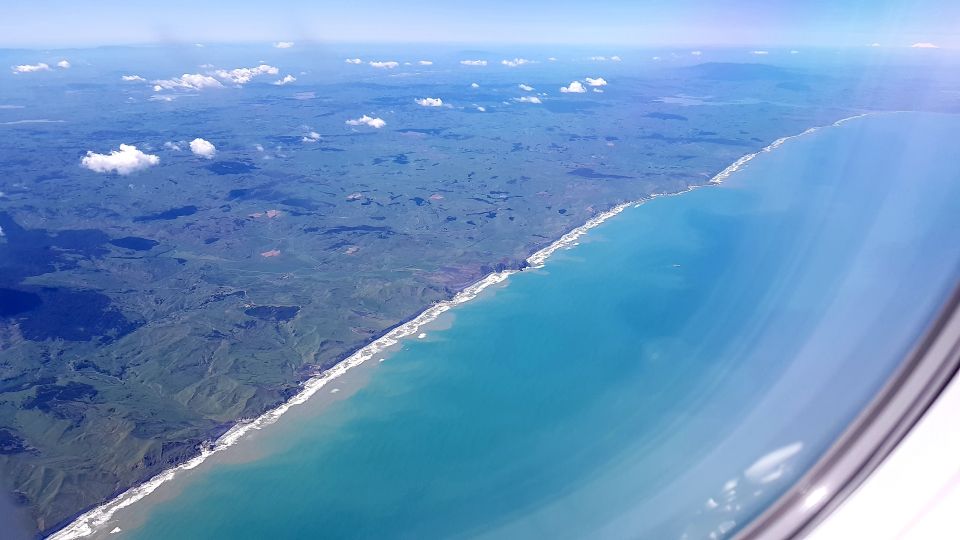
We flew south just off the west coast of the North Island. Not many people here to be concerned about a tsunami. Image: LEARNZ.
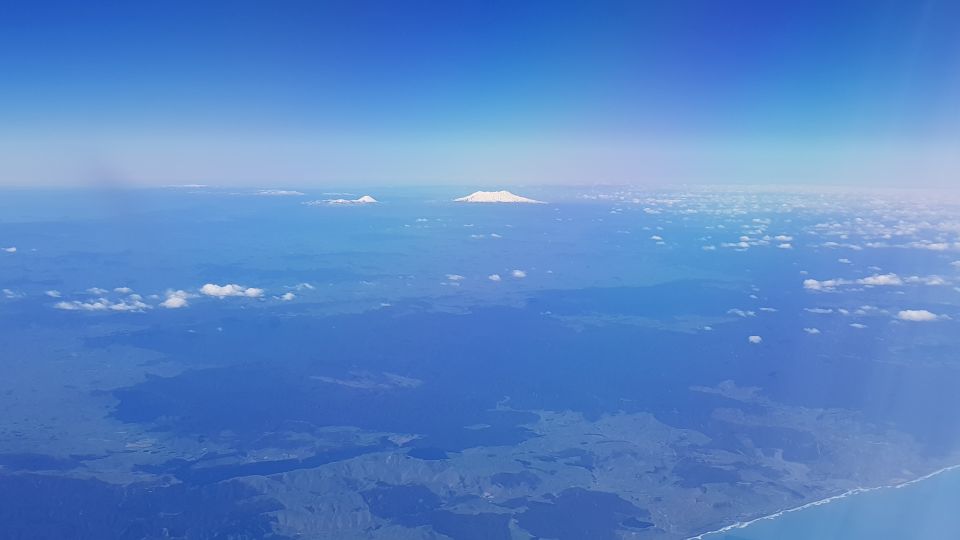
Volcanoes on the Central Plateau are a natural hazard threat. Do you know what volcanoes these are? Image: LEARNZ.
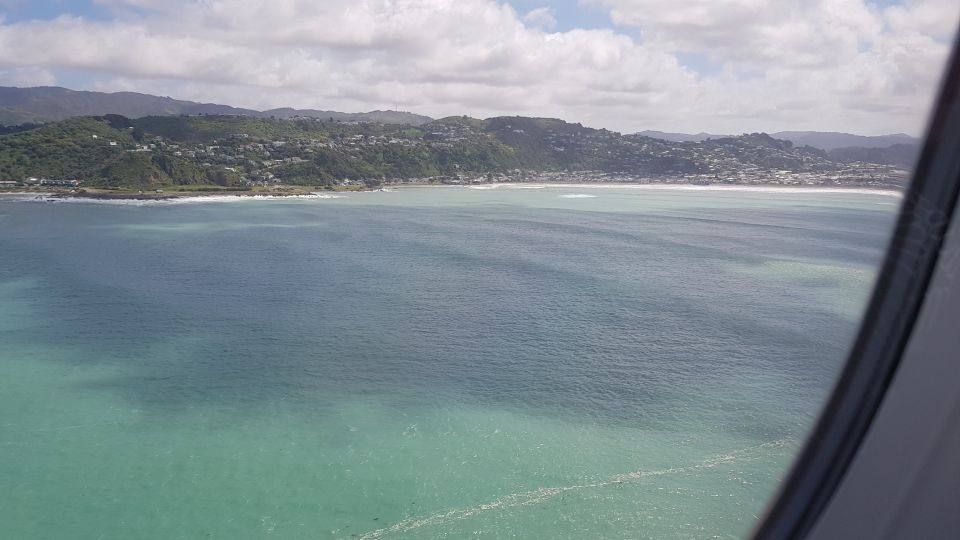
Looking towards Lyall Bay and nearing touchdown. Image: LEARNZ.
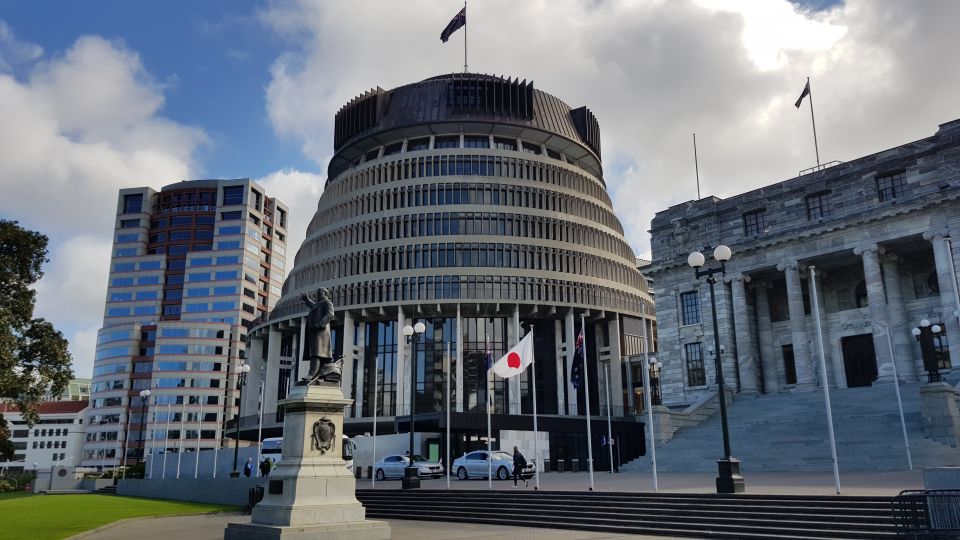
Andrew and the ambassadors went for a stroll around the Parliament grounds. You could do a search on how resilient the Beehive is to earthquakes. Image: LEARNZ.